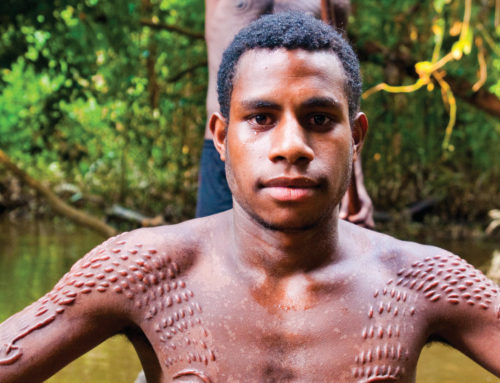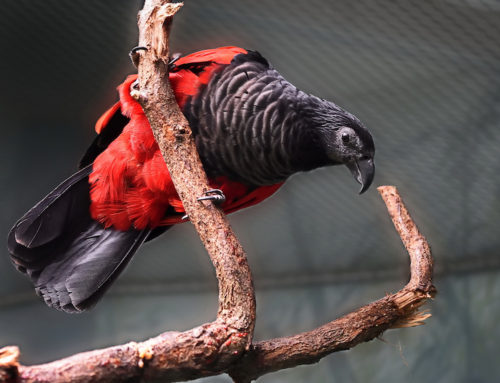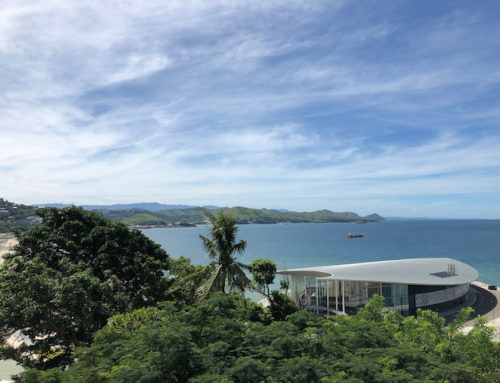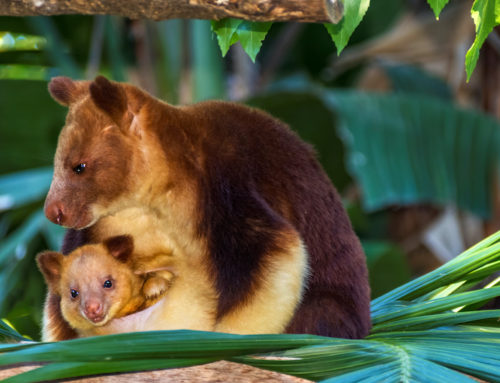New Britain – The Island with it all
4th January 2016

Papua New Guinea (PNG) really does have it all, but as a visitor to the island you may not have time to see it all. New Britain is the answer to ‘seeing it all’. New Britain offers a taste of all of PNG’s gems and caters to a diverse range of travellers. New Britain is divided into two distinct Provinces, East New Britain (ENB) and West New Britain (WNB). While the East has had much contact with Europeans, the West is sparsely populated, meaning the two Provinces have their own unique characteristics and feel. While there is much to do in New Britain, here are a few of our favourites.
East New Britain has two major festivals that dominate the year and if you can plan a visit to coincide with one of these festivals, you won’t be disappointed. The National Mask and Warwagira Festival is an extravaganza of traditional mask cultures of PNG. The five-day festival also showcases cultural dancing, ritual performance, story-telling, cultural exchanges and much more. In 2016, the event will be held in Kokopa, ENB from the 15th to 19th of July. The Frangipani Festival, named after Rabaul’s signature bloom is a celebration of the rebirth of Rabaul town after the 1994 volcanic eruptions. The festival bursts with dance, sing-sings, colour and a canoe race around the iconic Beehives (Dawapia Rocks) in the centre of Simspon Harbour. The festival is held over the Independence weekend each September in Rabaul.
Speaking of volcanoes, if its adventure you’re after then nothing beats hiking a volcano. New Britain is practically rumbling with both active and inactive volcanoes and most of them can be climbed – even the ones bellowing black smoke. While the volcanoes are tracked, it is recommended to take a local guide who will be invaluable. Two of the best volcanoes to climb are Rabaul Nakaia which is only a short 30-minute climb and Kombiu which is closer to a 2.5-hour climb (round-trip), depending on your fitness. It is well worth the hike and the views from the top of the 688 metre mountain are nothing short of spectacular. For a more challenging hike and to really get your adrenalin pumping, you can also attempt Mt Vulcan which is only 243m but the slopes are quite tricky due to being scored with deep crevices from the drying and contracting mud-ash. West New Britain offers some good trekking experiences in the Cape Glousester area where Mt Langila gently rumbles away or visit the beautiful Kandrian area where you can trek along the coast to Eseli.
It’s worth visiting Matupit Island, the Island that could have been wiped out by Mt Tavurvur’s violent explosion in 1994. When the bellowing mountain spewed ash and lava in this angry outburst, strong winds directed the explosion over Rabaul town and little Matupit was spared most of the devastation. The village community, made up of a thousand or so inhabitants choose to stay put right underneath this unpredictable monster. Throughout the island you will find Japanese aircraft scattered amongst the palms and buried slightly in the sand. Megapode birds roam the island and each day Megapode-egg hunters travel to the nesting grounds of the birds to hunt for their eggs which serve as a food source and income. It’s also worth visiting the Island’s impressive hot springs which are surrounded by a mystical landscape. While you can’t climb Mt Tavurvur, you can organise a canoe tour from Matupit Island around the southern base of the mountain where flowing lava makes an impressive photo opportunity.
If you are outdoors after nightfall, you may be lucky to spot the Bulbophyllum nocturnum, the incredible orchid recently discovered in New Britain and the only known orchid to only flower consistently during the night and close during the day. It was discovered in the rainforest of New Britain in 2008 and later described in 2011. It was observed that the single flower opens around 10pm and closes some 12 hours later.
Mioko Island in ENB is a fantastic island to visit with an array of sights including beautiful beaches, two open-pit caves on the island’s east and a coast watch lookout cut into the cliff of the eastern most point. The caves have an historical background and were used as hideouts by hundreds to avoid the Japanese in WWII. Nearby a small accessible tunnel links the two cliff faces leading to views of the vast ocean, sky and the cliff below. If you are game, it’s worth wriggling your way through. When the seas are calm, snorkelling and canoeing make for a relaxing day and by moonlight try your hand (or luck) at spear fishing which is clearly serious business on the island as it provides adequate protein for the villagers’ typically starch-heavy diet.
At Paga Hill Estate we recommend a visit to PNG’s largest island. Whether you are heading to New Britain to experience its sensational underwater playground, namely Kimbe Bay’s world class diving sites, or are hoping to tackle one or more of the many grumbling volcanoes or simply want to bask in the culture and exceptional landscapes on offer, this region will not disappoint.
Paga Hill Estate is a world class master planned estate in the heart of Port Moresby, Papua New Guinea. The waterfront site is the first comprehensively planned multi-use development in Papua New Guinea to be enjoyed by both residents and visitors alike. The all inclusive development will include vibrant public spaces and waterfront promenade, luxury hotels, residential apartments, restaurants, retail, commercial space, a National Cultural Centre, restoration of WWII relics, marina precinct and an international cruise liner terminal.





